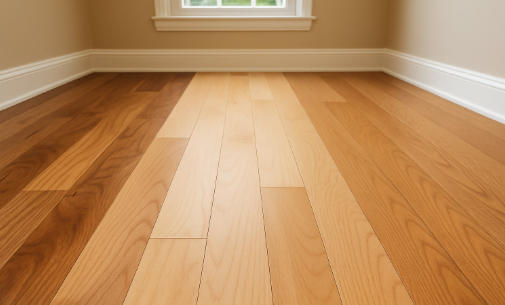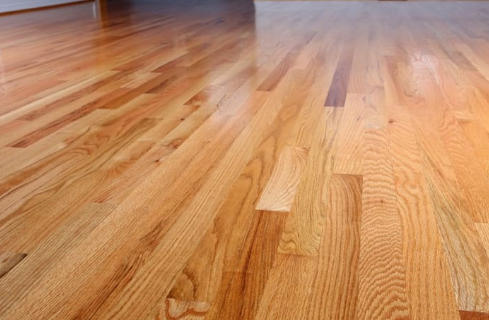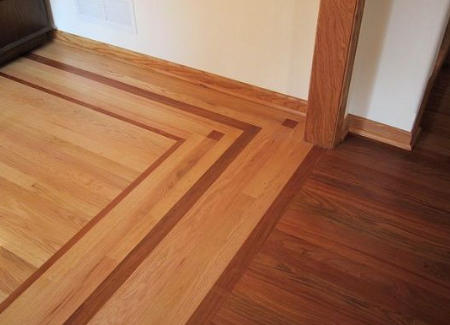Views: 222 Author: Rebecca Publish Time: 2025-10-26 Origin: Site











Content Menu
● Understanding Hardwood Flooring Types
● Key Factors That Determine the Best Hardwood
● Top Hardwood Species and Their Distinct Benefits
>> 1. Oak: The All-American Favorite
>> 2. Maple: Bright Minimalism
>> 3. Hickory: Rugged Strength
>> 5. Cherry: Natural Warmth and Maturity
>> 6. Ash: Adaptable and Impact-Resistant
>> 7. Exotic Hardwoods: Rare Beauty, Exceptional Hardness
● Extended Comparison Chart: Hardwood Species Overview
● Factors Affecting Longevity and Performance
● Hardwood Flooring Finishes and Sheens
● Design Tips: Coordinating Wood Color and Interior Style
● Sustainable and Eco-Friendly Choices
● Hardwood Care and Maintenance Guide
● Common Mistakes to Avoid When Choosing Hardwood
● FAQ
>> 1. What is the hardest wood used for flooring?
>> 2. Which wood species are easiest to maintain?
>> 3. Can hardwood floors be refinished multiple times?
>> 4. Are darker wood floors harder to keep clean?
>> 5. What is the best finish for durability?
Hardwood flooring is one of the most desirable materials in home design, admired for its timeless beauty, durability, and natural charm. Whether you're renovating an old house or starting from scratch, choosing the right wood species can significantly influence not only the appearance of your interior but also the lifespan of your floors. The question “What is the best wood for hardwood floors?” doesn't have a single answer—it depends on multiple factors such as hardness, grain pattern, environmental conditions, and your personal aesthetic preferences.
This comprehensive guide explores various hardwood species, their features, and how to select the ideal wood to fit your priorities in durability, style, and budget.

Before diving into wood species, it's important to understand the structural types of hardwood flooring available today.
- Solid hardwood flooring: Each plank is made from a single, solid piece of timber. It's typically ¾ inch thick and can be sanded and refinished multiple times, allowing the floor to last for generations. However, it's more susceptible to humidity fluctuations and not recommended for basements or other moisture-prone areas.
- Engineered hardwood flooring: Constructed with real wood veneers layered over plywood or composite cores, engineered floors deliver better dimensional stability and resistance to moisture. They can be installed in areas where solid hardwood would struggle, such as below-grade rooms or radiant-heated floors.
Both solid and engineered hardwoods can use the same wood species—oak, maple, walnut, and more—so your choice of species remains crucial to performance and aesthetics.
Selecting the best hardwood involves evaluating several interrelated characteristics:
- Hardness: Measured by the Janka hardness scale, this indicates how resistant the wood is to scratches and dents. Higher numbers mean harder, more durable floors.
- Grain and texture: Distinctive wood grains define a floor's appearance. Some homeowners prefer consistent grains, while others love the natural variation that adds character.
- Color tone: From pale blond to deep chocolate brown, the right color sets the mood of your interior.
- Dimensional stability: Depending on humidity levels in your region, certain woods expand and contract more than others.
- Sustainability: More consumers are opting for FSC-certified or reclaimed wood for environmentally responsible choices.
Oak remains the most popular hardwood flooring material in North America for a reason—balance. It combines excellent strength, attractive grain variation, and an affordable price point.
- Red Oak: Known for its warm undertones and visible grain patterns. It stains evenly and provides a traditional appearance suited to classic décor styles.
- White Oak: Slightly denser and more resistant to moisture than red oak, with cooler, neutral hues that align perfectly with modern interior designs.
Both red and white oak can last decades under normal household use, making them reliable and versatile options.
Maple features a subtle grain pattern and natural light shade, giving spaces a clean and modern look. Its hardness ranking (about 1,450 on the Janka scale) makes it one of the toughest domestic woods available. Maple's surface resists wear well, though it can be tricky to stain evenly, so clear finishes or natural tones are most common. Maple suits contemporary homes, offices, and Nordic-style interiors.
If durability tops your list, hickory deserves your attention. Scoring around 1,820 on the Janka scale, it's among the hardest North American hardwoods. Its bold color variation—from creamy whites to rich browns—contributes to an authentic, rustic atmosphere. Hickory's visual texture makes it ideal for country, farmhouse, or log-style homes, and it hides scratches more effectively than smoother grains.
Black walnut is admired for its rich, chocolate-brown color and silky texture. Though softer than oak (around 1,010 Janka), it brings unmatched sophistication and depth to formal areas. Walnut flooring tends to darken over time, enhancing its natural warmth. Because it's less tolerant of heavy wear, it's best suited to low-traffic areas such as bedrooms or formal living rooms.
Cherry wood flooring glows with a reddish hue that deepens with exposure to light, giving the interior a sense of maturity and luxury. However, with a Janka rating of 950, it's comparatively softer and may dent more easily. Many choose cherry for its graceful color evolution and refined aesthetic despite its delicacy.
Ash flooring has gained fans for its pale tone, open grain, and excellent resilience. It ranks about 1,320 on the Janka scale—hard enough for daily wear but flexible enough to absorb shock. These qualities make it perfect for active families and sports courts. Its light tone also helps brighten smaller spaces.
Exotic species like Brazilian Cherry (Jatoba), Teak, or Tigerwood offer superior hardness and striking visual impact. Brazilian Cherry, for example, boasts a 2,350 Janka rating and a rich red-brown hue. Exotic woods are highly durable but often come at a higher price and raise sustainability concerns if not ethically sourced.

| Wood Species | Janka Hardness | Color Tone | Grain Style | Suitable Interior | Maintenance Level | Average Lifespan |
|---|---|---|---|---|---|---|
| Red Oak | 1,290 | Warm reddish | Prominent grain | Traditional, transitional | Moderate | 70+ years |
| White Oak | 1,360 | Cool beige-gray | Subtle straight grain | Modern, coastal | Low | 80+ years |
| Maple | 1,450 | Pale cream | Fine, uniform | Minimalist, contemporary | Low | 60–75 years |
| Hickory | 1,820 | Light–dark mix | Bold contrast | Farmhouse, rustic | Low | 80+ years |
| Walnut | 1,010 | Deep brown | Smooth flow | Luxury interiors | Moderate | 60+ years |
| Cherry | 950 | Reddish | Smooth, fine | Classic, elegant | High | 50–60 years |
| Ash | 1,320 | Pale blonde | Open, wavy | Casual, bright | Low | 70+ years |
| Brazilian Cherry | 2,350 | Red-brown | Dense, rich | High-end, durable floors | Low | 100+ years |
Even the hardest wood won't last if improperly maintained or installed. Consider the following influences:
- Subfloor and installation method: Nail-down, glue-down, or floating systems each interact differently with environmental moisture.
- Humidity control: Wood expands and contracts with seasonal humidity. Humidifiers and dehumidifiers help preserve dimensional stability.
- Foot traffic levels: Choose a harder wood for family rooms, kitchens, and halls; softer species suit secondary areas.
- Finish quality: A durable topcoat, such as aluminum oxide or polyurethane, significantly extends lifespan by protecting against abrasion.
Your choice of finish not only defines the appearance but also affects maintenance routines:
- Matte finish: Hides wear and scratches best, providing a relaxed, modern vibe.
- Satin finish: Offers balanced reflection—neither too dull nor shiny.
- Gloss finish: Enhances formal interiors but reveals dust more easily.
Popular finishing systems include:
- Polyurethane (oil- or water-based): Forms a tough, clear coat for maximum protection.
- Hardwax oil: Penetrates wood fibers while maintaining a natural matte look.
- UV-cured finishes: Applied at the factory and instantly cured for extra durability.
- Light woods (maple, ash, white oak): Expand small rooms visually; ideal for Scandinavian or minimalist spaces.
- Medium tones (red oak, cherry): Create a warm, welcoming feel, complementing traditional or cottage interiors.
- Dark woods (walnut, mahogany): Add drama and formality, pairing beautifully with metallic accents and classic furniture.
Homeowners can also vary plank width and layout patterns—such as herringbone or chevron—to express personality and architectural style.
Sustainability has become an integral part of flooring selection. Ethical choices extend flooring's value beyond aesthetics by supporting forest conservation.
- Look for FSC (Forest Stewardship Council) or PEFC certification to ensure responsible timber sourcing.
- Consider reclaimed hardwood, which recycles old beams and planks from barns and factories.
- Bamboo and cork offer renewable alternatives, though technically not hardwoods.
Using local hardwood species can also reduce the environmental impact of transportation, all while supporting regional forestry industries.
Hardwood floors age gracefully if properly maintained. Below are expert care tips to maximize their lifespan:
- Sweep or vacuum regularly with a soft-brush attachment.
- Clean spills immediately to prevent moisture damage.
- Place mats at entrances to trap dirt.
- Maintain stable indoor humidity (35–55%) year-round.
- Avoid steam cleaners; use manufacturer-recommended wood cleaners.
- Apply a fresh finish coat every few years for continued luster.
- Rearrange rugs occasionally to ensure even color exposure under sunlight.
With routine care, even a century-old hardwood floor can retain its beauty.
- Overlooking humidity levels: Installing solid hardwood in humid basements often leads to warping.
- Ignoring lifestyle factors: A soft wood like cherry in a busy hallway can quickly show dents.
- Choosing aesthetics over practicality: High-gloss walnut looks stunning but requires frequent upkeep.
- Skipping acclimation: Failing to let wood adjust to indoor humidity before installation may cause expansion issues later.
Avoiding these errors ensures a smooth installation and years of reliable performance.
Hardwood pricing varies widely by species, grade, and finish. Domestic woods like oak or maple are typically more economical, ranging from $5 to $10 per square foot installed. Exotic woods such as Brazilian cherry or teak may exceed $15 per square foot. Installation complexity, regional material costs, and finish selection all contribute to final pricing. Despite higher upfront investment, hardwood's longevity and aesthetic appeal offer unmatched long-term value.
Choosing the best wood for hardwood floors ultimately depends on lifestyle needs, design preferences, and environmental factors. Oak remains the all-around favorite for its strength and versatility, while maple delivers contemporary charm and hickory provides rugged endurance. Walnut conveys luxury, cherry offers warmth, and ash embodies casual brilliance. Exotic woods, though pricey, promise exceptional durability and distinction.
No matter the species, a properly installed and well-maintained hardwood floor will provide generations of beauty, comfort, and value. Make your decision based on both practical performance and emotional resonance—because the best wood is the one that turns a house into a timeless home.

Brazilian Cherry, with a Janka hardness of about 2,350, is among the hardest commonly used wood species for residential flooring.
White oak and maple are favored for low maintenance thanks to their dense grain structure and resilience against scratches.
Yes. Solid hardwood can typically be refinished 7–10 times, extending lifespan for decades. Engineered hardwood allows for 1–3 refinishings depending on veneer thickness.
Darker woods such as walnut or mahogany tend to reveal dust and scratches more easily. Lighter species can help disguise debris between cleanings.
Polyurethane finishes, especially water-based versions, provide the strongest layer of protection while preserving the wood's natural color.